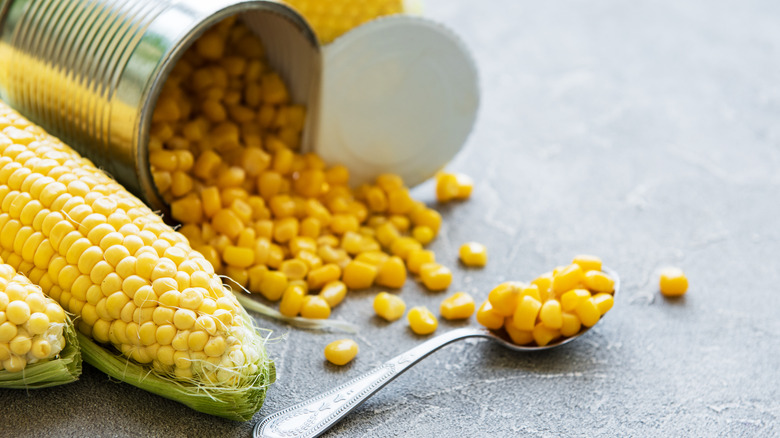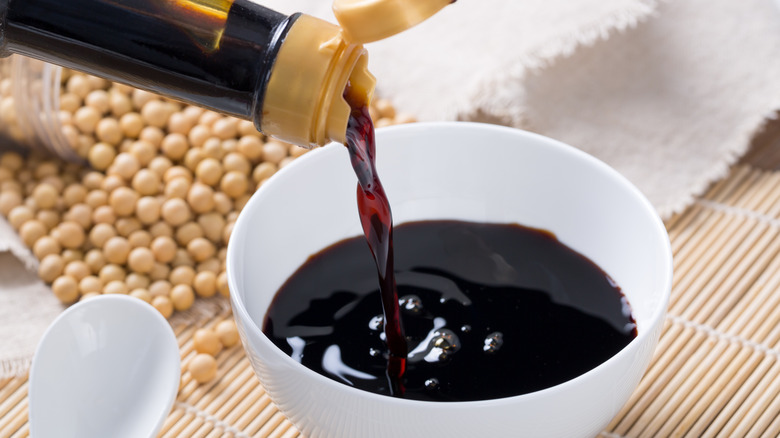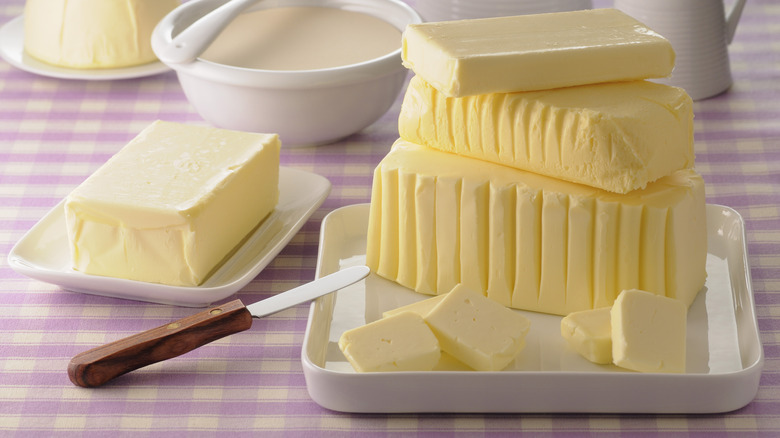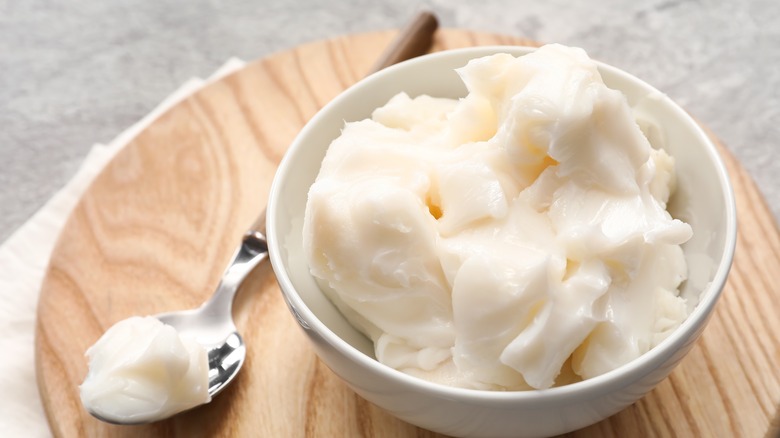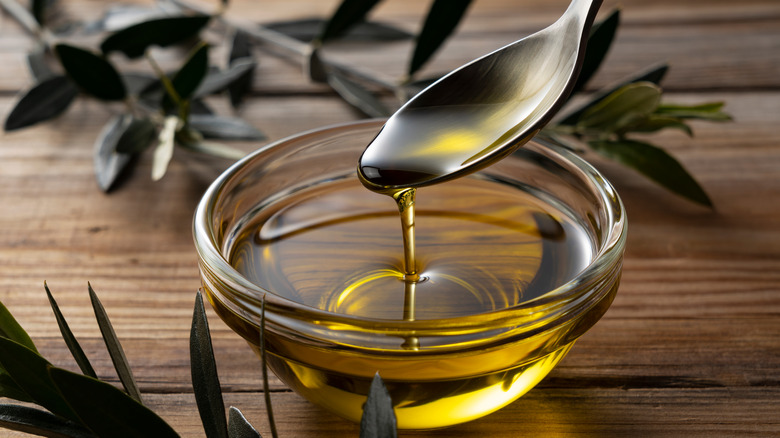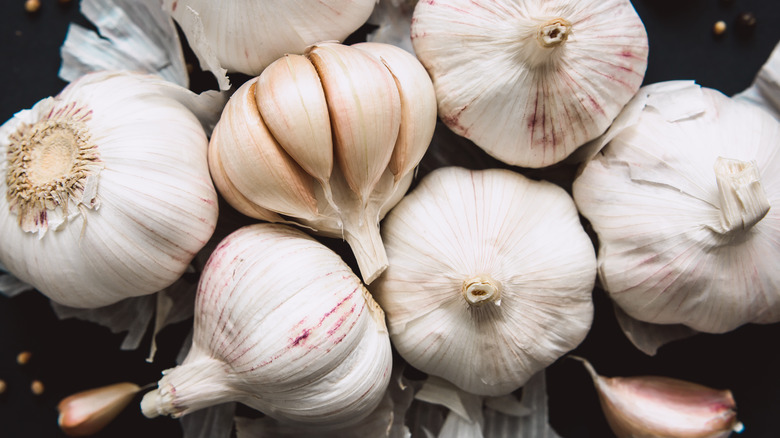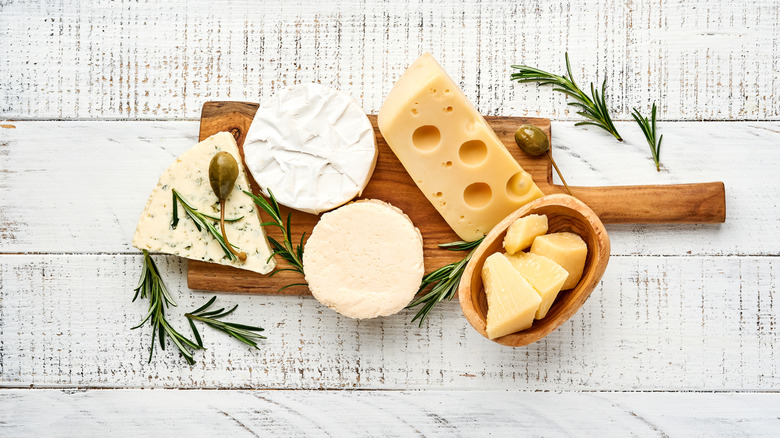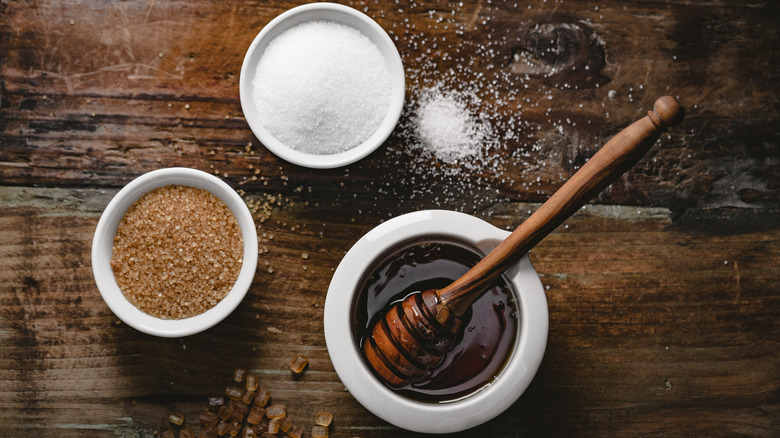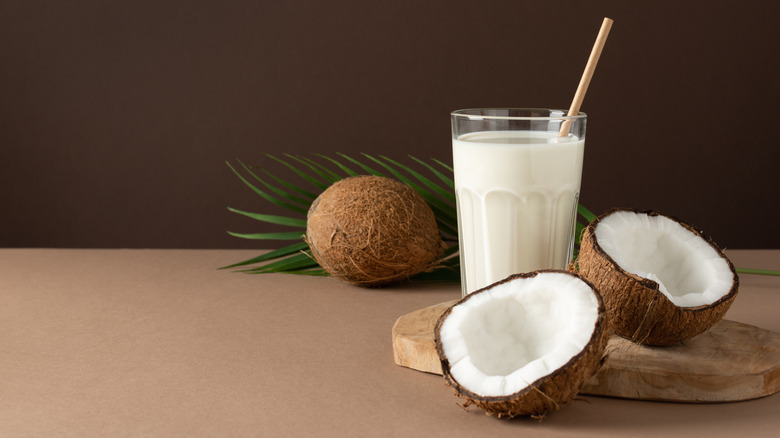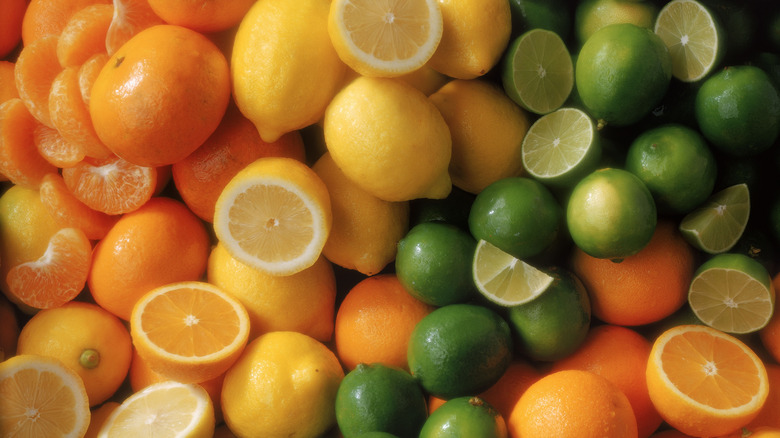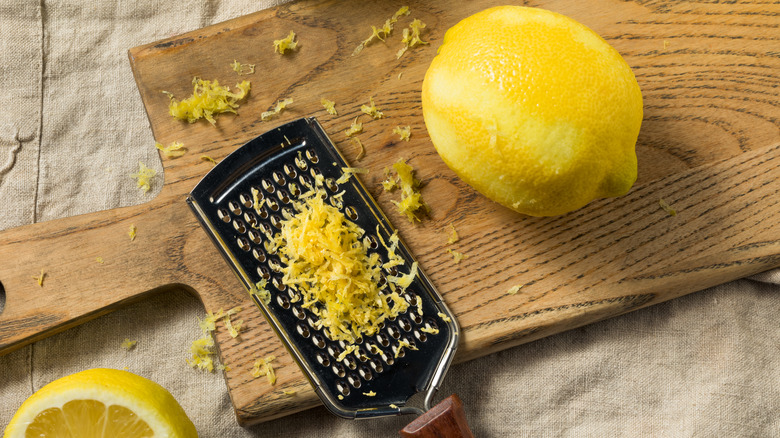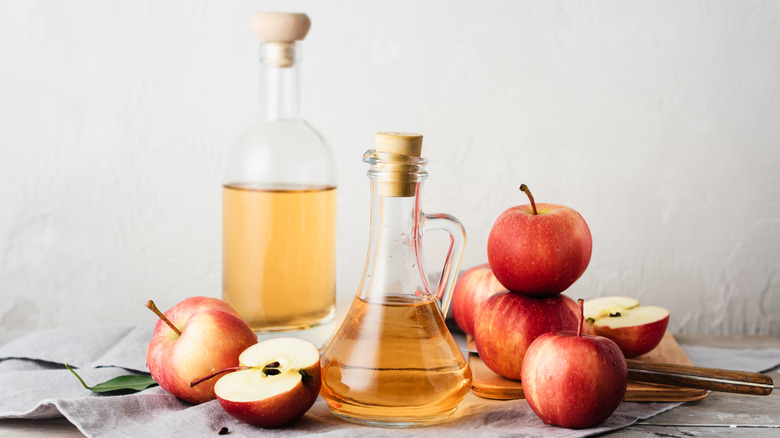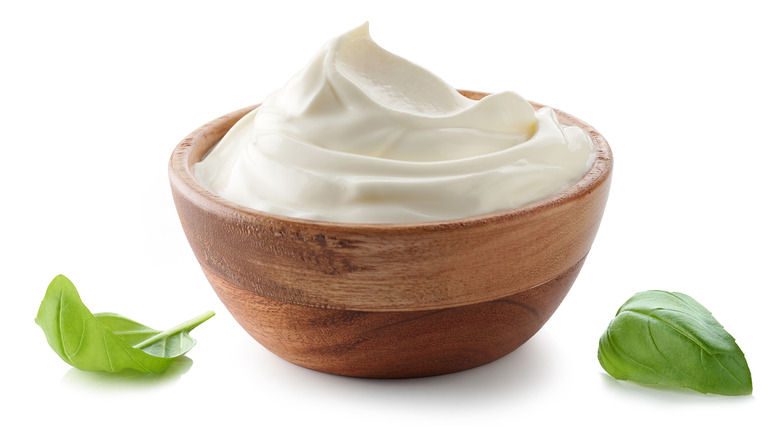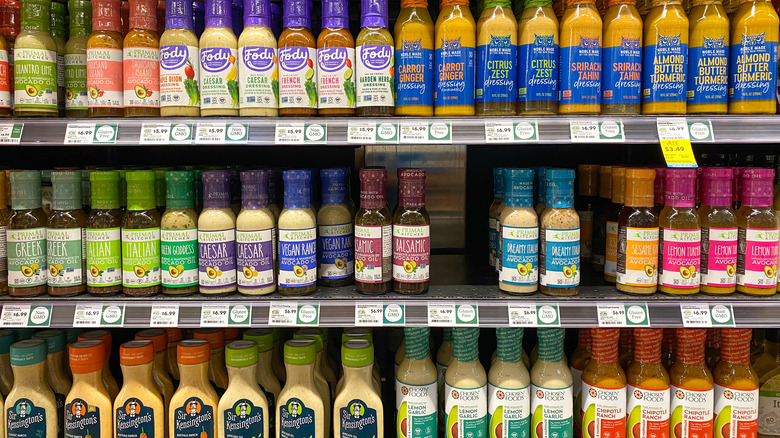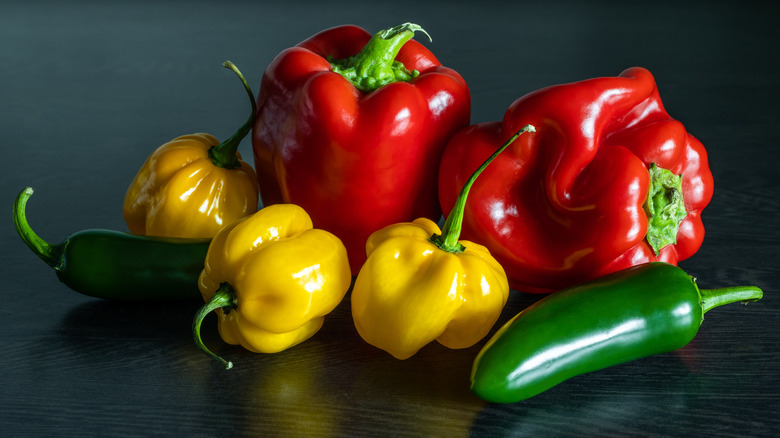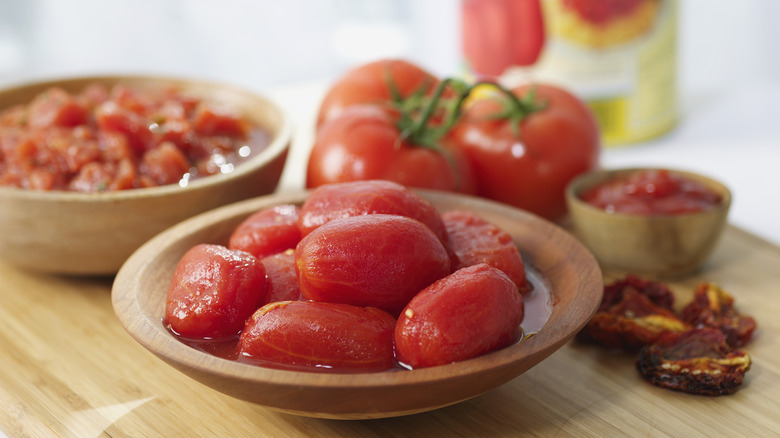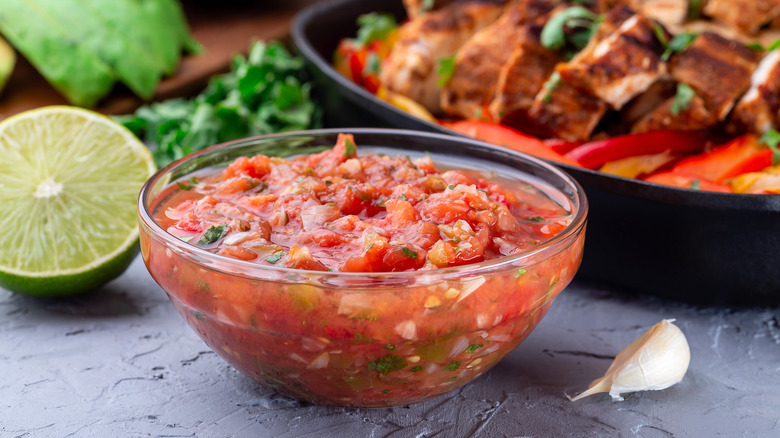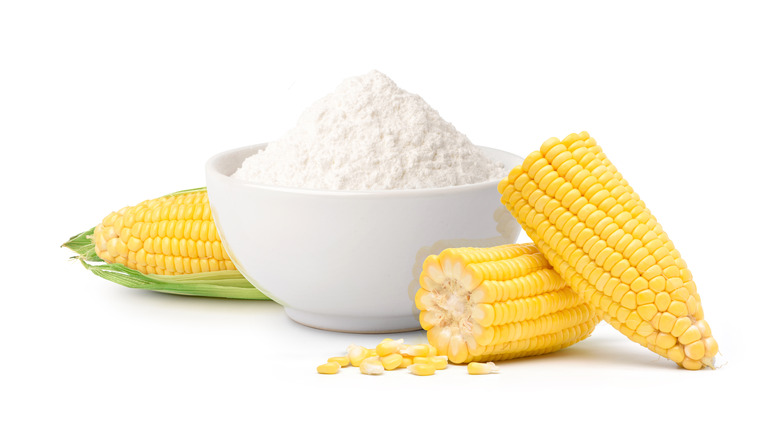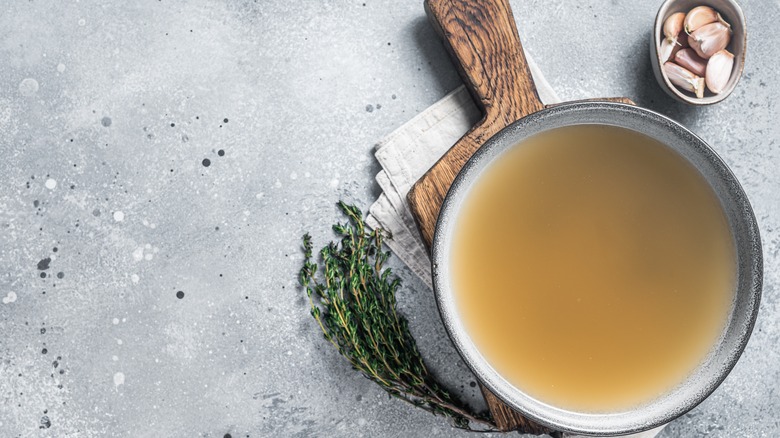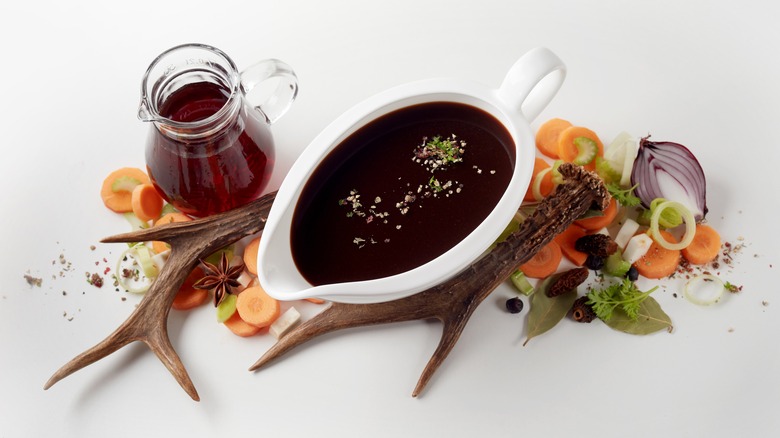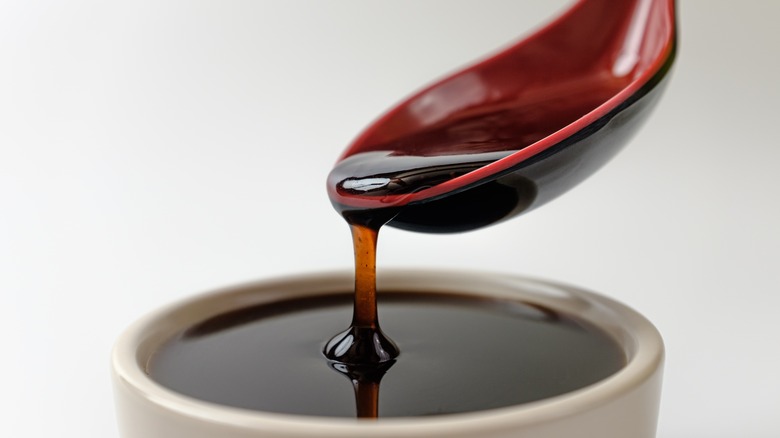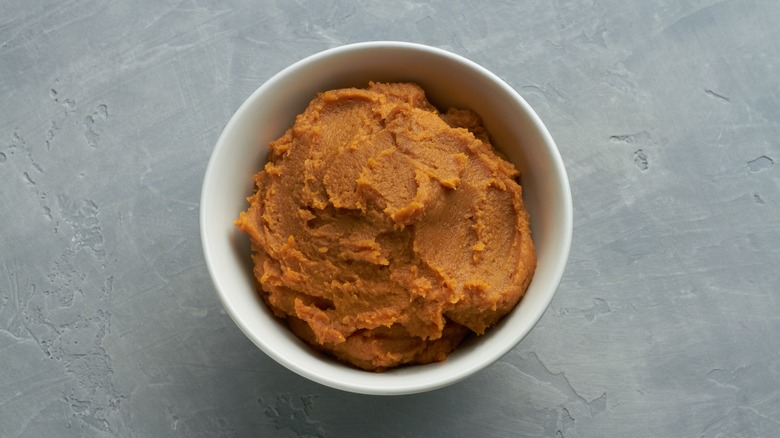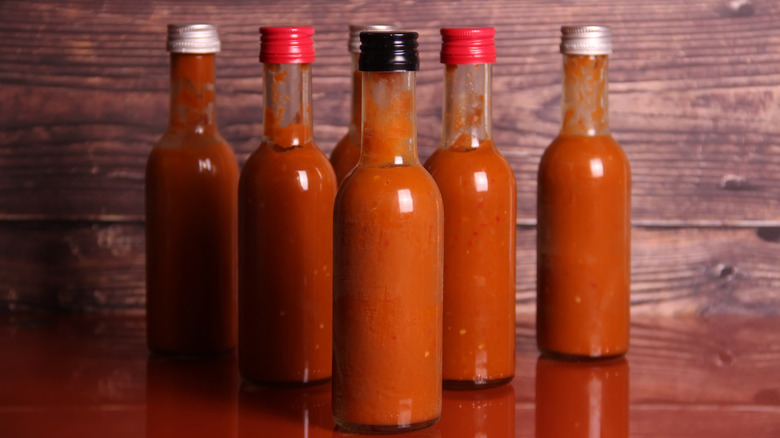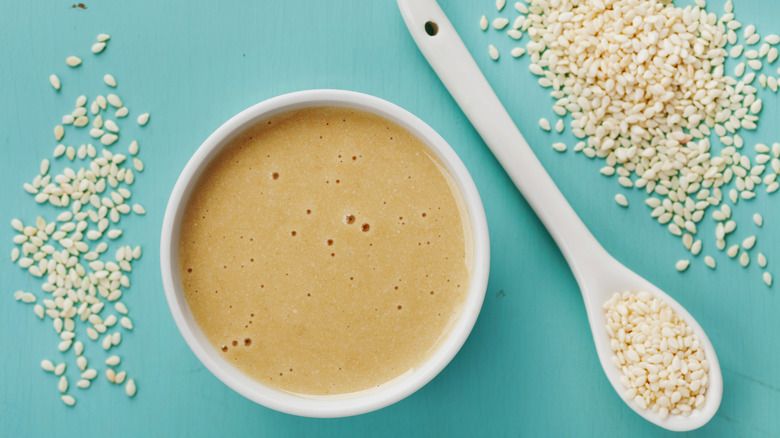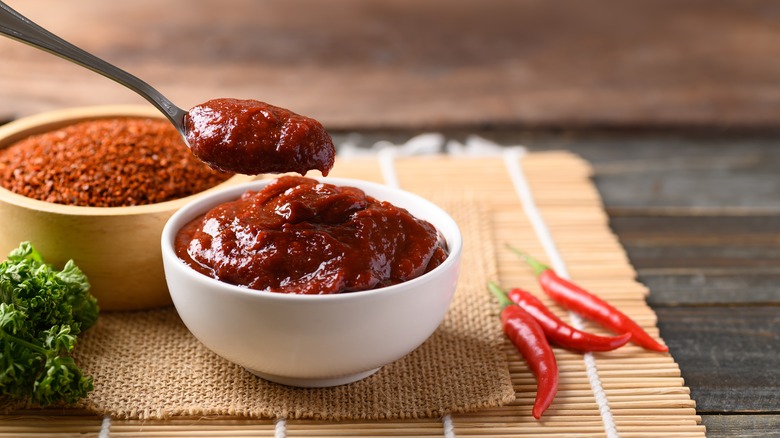30 Best Ingredients To Add For More Flavorful Canned Corn
Few things taste as good as fresh summer corn. The kernels burst off the cob, filled with sweet, milky goodness without needing any additional seasonings. Summer corn is so abundant that it lines the farmer's market stalls and can be found in every grocery store's produce aisle. In the winter, while you might be able to find it at the grocery store, this starchy vegetable just doesn't taste the same. It's sweet but not bursting with flavor and tastes like a whisper of its summer self.
Luckily, canned corn makes a fantastic substitute. You should always have canned corn in your pantry because this shelf-stable vegetable is picked and packed at the peak of its freshness, and it's full of vitamins, minerals, and antioxidants. Of course, canned corn isn't as glamorous as a grilled cob glazed with your favorite flavorings, but that doesn't mean it can't taste as good as freshly picked corn. It just needs a little nudge in the right direction to bring out the corn's natural sweetness. Adding one or two of these options adds a ton of flavor to canned corn, making the dish taste so much better.
Salt
If you don't want to get too fancy with canned corn additions, salt is a good place to get started. Salt doesn't just add salinity to food; it also helps enhance other flavors (like corn's natural sweetness) and balance out the bitterness. A little pinch of salt goes a long way to make canned corn taste like summer's fresh bounty. Of course, you'll want to pay attention to the sodium content on the can because it may already contain salt, so it's never a bad idea to taste canned corn before reaching for the salt shaker.
Soy sauce
Instead of adding salt to canned corn, try adding soy sauce instead. This dark liquid adds an even level of salinity to the sweet vegetable while also boosting the dish's savory vibes, giving it a rounder, fuller flavor. Soy sauce also darkens the color, giving the corn an appetizing, glazed appearance. There are several different types of soy sauce, but you should be able to use whatever you have on hand in the pantry. If you're specifically looking to make a gluten-free dish, seek out wheat-free soy sauces like tamari or liquid aminos.
Butter
We often brush corn on the cob with butter as it cooks to add rich, buttery flavor, so there's no reason to skip the butter when heating up a can of corn. Adding a pat of butter to canned corn accentuates the sweet burst of flavor in each kernel. If you want to take your butter flavoring to the next level, start using brown butter in your favorite corn recipes. This technique cooks the butter's milk solids, transforming them to create nutty, caramelized flavors. Combined with corn, those flavors are hard to beat!
Bacon grease
The next time you cook bacon, save the grease so you can add it to the canned corn. Our favorite Southern fried corn recipe uses bacon grease instead of butter or oil when pan-frying corn kernels, infusing this starchy vegetable with a salty, smoky flavoring without adding texture that comes from chopped bacon bits. It's subtle, but it's the perfect level of flavor when you're trying to elevate a humble can of corn.
Olive oil
A vegan-friendly alternative to butter and bacon grease comes in the form of olive oil. Keep in mind that there is a difference between regular versus extra-virgin olive oil, which makes a difference when seasoning canned corn. The subtle flavors in extra-virgin olive oil are better suited as a finishing oil or salad dressing, so we recommend using it after the canned corn comes off the stovetop. On the other hand, regular olive oil is a great choice for cooking canned corn to keep it from sticking to the pan.
Garlic
Looking for one ingredient that will forever change your canned corn? Add a few cloves of minced fresh garlic to the mix. Other members of the allium family work well here, too (like onions, leeks, chives, or shallots), but garlic has a bright pungency that adds a bit of spice to your corn mix. Combined with a fat like olive oil, bacon grease, or butter, that flavor goes a long way to accentuate the corn's natural sweetness. If you don't have any fresh garlic, garlic powder will work in a pinch, but it doesn't bring the same fresh flavor.
Herbs and spices
Some ingredients on this list work to accentuate the corn's natural flavor, and those are great for simple corn side dishes. When we're making corn salad, though, we typically like to add bold, punchy flavors in the form of herbs and spices. Most green herbs pair well with corn — like parsley, cilantro, rosemary, tarragon, and thyme. Dried spices and seasonings like cajun seasoning, chili powder, or Old Bay work equally well. To make a fantastic Mexican street corn salad recipe, we recommend adding a chili-lime seasoning like Tajin.
Cheese
If you've ever tried Korean corn cheese, you already know how well cheese and corn go together! It comes down to two basic reasons. For starters, most cheese is salty, from brined cheese like feta or cotija cheese to aged varieties like Parmesan and cheddar. That means it brings out the corn's sweetness while adding a unique flavoring that's missing from simple table salt. Another reason to add cheese to corn is related to texture. Whether it's melted or added raw, cheese adds a fantastic chewiness that contrasts corn's crispy bite, making it a match made in heaven.
Honey or sugar
Fresh corn on the cob is bursting with natural sweetness, but canned corn sometimes falls short of its summer self. If you taste your canned corn and find that it's lacking, you may be able to boost the flavor with a small pinch of sugar. Those avoiding sugar can look to other ways to add sweetness without sugar, like honey, maple syrup, applesauce, or fruit juice. Adding a pinch of cinnamon or a splash of vanilla extract can also boost sweet flavors.
Milk, half-and-half, or heavy cream
It's never a bad idea to turn a can of corn into a rich side dish like creamed corn, and dairy products are one way to get there. Simmering the kernels with milk or cream adds sweet flavor and rich undertones to the corn while softening its texture, turning it into a melt-in-your-mouth bite. Of course, you don't have to use a whole container to get there. Even adding a few tablespoons of these products to corn just after it finishes cooking will enhance corn's natural flavor.
Coconut milk
If you want to create creamy corn without adding any dairy, look to dairy-free coconut milk. It's our go-to ingredient when making vegan corn chowder, as it adds body and a smooth consistency without adding animal-based ingredients. Like milk, you don't have to use the whole can; a small splash of coconut milk in your favorite canned corn side dish will boost the flavor and give it an island vibe (especially when combined with lime juice).
Citrus juice
Citrus juice is a common addition to salad dressings, where its bright flavor and acidic edge balances out unctuous, fatty characteristics. Those contributions work equally well with corn, especially when you have added rich fats from butter or bacon grease. Choose lemon juice to add tart, tangy flavor, or swap in lime juice for tropical or Latina American recipes, like copycat Chipotle corn salsa. For a sweeter finish, opt for orange juice instead.
Citrus zest
While lemon juice tastes acidic and sour, lemon zest comes from the peel and has more of a bitter flavor. That might not sound like a good combination for corn, but the light bitterness works to balance out sweetness to create a pleasant overall taste. Zest also contains aromatic oils, adding an unforgettable scent that takes canned corn to the next level. You can zest any citrus fruit, but keep in mind that the color of green lime zest will stand out more than lemon or orange zest.
Vinegar
A splash of vinegar will have the same general effect as citrus juice, brightening up canned corn and adding depth of flavor. Different kinds of vinegar will add a different level of flavoring, with distilled vinegar bringing the most neutral acidity and balsamic vinegar providing a sweet, umami edge. If you really want to transform a can of corn, use vinegar to turn it into pickled corn — it's one of our favorite types of pickled vegetables.
Sour cream, Greek yogurt, or mayonnaise
Adding a creamy element to canned corn is a great way to boost flavor while elevating the dish's texture. Sour cream and Greek yogurt share a similar tart profile, so they both work for dishes like creamy corn dip, although sour cream has a sweeter vibe, and Greek yogurt adds an extra tangy boost. The latter is also thicker, so you may want to thin it down with water, depending on the recipe. If you're turning a Mexican street corn recipe into a corn salad, mayonnaise is the way to go with its rich, eggy taste and smooth, creamy consistency.
Salad dressing
One of the easiest ways to boost corn's flavor is by using bottled salad dressing. Most store-bought dressings contain many of the flavoring components we have already talked about — salt, fat, an acidic component, and herbs and spices. The real question here is which salad dressing to use (and there are so many choices). For thicker, creamier dishes, we recommend bold dressings like ranch, blue cheese, Caesar, or Russian dressing. For light, refreshing corn salads, stick to vinaigrettes.
Diced peppers
Adding vegetables to canned corn is a great way to add flavor without diluting the corn's natural flavor. Diced peppers make an excellent addition to corn, especially when using fresh peppers because they also add an element of crunch. Use spicy jalapeños or Serrano peppers in corn salsa recipes, or look to sweet bell peppers to add juicy flavor without any added heat. Canned peppers (like green chilies) are a great way to incorporate peppers without changing the corn's texture, and pickled peppers will add both spice and an acidic vinegar-rich tang.
Tomatoes
When tomatoes are in season, we love making a summer tomato and corn salad that features these two summer staples with salty feta and herbaceous basil. The acidity in the tomatoes brings out corn's naturally sugary essence, which in turn brings out the tomato's sweetness. They're a perfect match! In the winter, canned tomatoes work just as well because (like corn) they're picked and packed at the peak of their ripeness. Diced tomatoes are a natural choice for textural reasons, but tomato purée or tomato juice works just as well from a taste perspective.
Salsa
If you're looking for a quick-and-easy canned corn side dish, try combining corn with pre-made salsa. Like bottled salad dressing, salsa contains several ingredients we've already talked about: tomatoes, peppers, garlic, citric juice, and herbs. Add a cup of chunky salsa to a drained can of corn to make an easy corn salsa, or use a few tablespoons of thin salsa if you want the corn texture to shine. To make it a filling side dish, add canned beans to the mix to make cowboy caviar.
Cornstarch
This one might sound odd — you don't usually add cornstarch to something to improve the flavor — but it really works with canned corn. One of the best ways to thicken creamed corn is by adding a slurry made from equal parts cornstarch and liquid. The cornstarch disappears as it simmers in the pot with canned corn, thickening up the dish's consistency and helping the flavors concentrate into a unified bite. That means sweeter, creamier corn, without a ton of extra ingredients.
White wine or vermouth
Drinking wines are often paired with corn on the cob, but you should also be adding a splash or two when cooking with this starchy vegetable. Canned corn tastes a little dull compared to the fresh-off-the-cob version, and white wine's crisp acidity can get it back to its summer self. Wine also works well to cut through any rich ingredient additions, like bacon or butter, creating a balanced bite. If you only want to use a splash, try using vermouth instead of wine. This fortified wine lasts up to a month in the refrigerator — much longer than a bottle of regular wine.
Chicken or beef broth
Broth is a great way to add a light level of richness to corn without adding the heaviness that comes with butter or other rich cooking fats. Broth also adds umami, savory flavors, and salinity without having to add salt. When reheating canned corn, drain the can and replace that liquid with chicken or beef broth. Bouillon cubes work well here, too, but be aware that they generally have more salt than broth.
Liquid smoke
Want to capture the essence of a summer barbecue in a can of corn? Use this concentrated ingredient! You should always have liquid smoke in your pantry because it's an easy way to capture the flavors of a charcoal grill or backyard smoker. A little goes a long way here, so start with a few drops and taste the corn before adding more. You can add it directly to the canned corn as you heat it up or infuse liquid smoke into the mayonnaise, citrus juice, or milk you plan to mix into the corn.
Worcestershire
If we had to choose a single secret ingredient capable of boosting any dish's flavor, Worcestershire would be at the top of the list. This sauce was born from a funky failure, a failed condiment that sat fermenting in a barrel until it revealed the perfect balance of sweet, salty, tangy, and savory flavors. It might not taste fantastic on its own, but it acts as an umami bomb when added to canned corn. You might not be able to put your finger on what exactly it does, but it gives the corn an ideal flavor that just makes it taste better.
Fish sauce
If you're looking to make a unique dish with canned corn, we recommend picking up a bottle of fish sauce. This fermented liquid condiment is similar to soy sauce, but it has a distinctly fishy, funky flavor — think soy sauce mixed with anchovies. It also has sweet notes of caramel that pair well with the corn, giving it a depth of flavor that's impossible to achieve without it. Like liquid smoke, a little goes a long way here, so start with a few drops and add from there.
Teriyaki sauce
We've all seen the bottles of teriyaki sauce at the store, but you'll learn more about how the flavors come together (and why they work with corn) if you make an at-home teriyaki sauce. The base is salty, umami-rich soy sauce, but it's sweetened with brown sugar and honey, given depth with garlic and ginger, and thickened with soy sauce. It creates a glaze that perfectly coats canned corn, transforming every bite into something quite spectacular.
Miso
This fermented paste is traditionally used to make soup, but it works really well with corn. It imparts salty, nutty, sweet, earthy, and lightly funky flavors that work well in boosting the corn's natural characteristics. Because miso is a thick paste, it's best to stir it into hot corn to help it melt and evenly coat the kernels. Miso works particularly well with butter, so don't be afraid to stir some melted butter into the mix.
Hot sauce
You don't have to love spicy food to add a little hot sauce to your canned corn. A little spice — whether that's the capsaicin compound found in spicy peppers and hot sauce or the piperine from black pepper — works to round out other flavor profiles. In the case of corn, a dash of hot sauce can create a sweet-and-spicy contrast that brings out the corn's natural sweetness. Of course, you can go as heavy with that dash as you like, adding enough to make your corn taste like Buffalo hot wings.
Tahini
This ground sesame paste is similar in texture to creamy peanut butter, but tahini tastes earthy and nutty, and it's sometimes described as bitter. Its smooth consistency adds creaminess to canned corn without having to add dairy, and the nuttiness pairs exceptionally well with sweet corn. If the bitterness is too much for you, try adding a sweetener to the mix, like maple syrup. You can also opt for roasted tahini, which is richer and deeper in flavor.
Gochujang
We love using gochujang to create a fun spin on classic canned corn recipes. Once, you could only find these bright-red tubs at Asian markets and specialty goods stores. Today, this fermented red chili paste has grown in popularity, and you should be able to pick one up at your local grocery store. The paste combines the spiciness of hot sauce with the funkiness of fish sauce and savory saltiness of soy sauce. Like miso paste, gochujang is thick, so mix it with hot water to thin it out or add it to corn while it's already hot.
